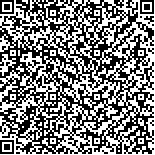甘莉,杨馨,李利娟,等.朗读治疗法同步远程言语康复对脑卒中后失语症患者语言能力和生活质量的影响[J].中华物理医学与康复杂志,2023,45(3):199-204
扫码阅读全文

|
| 朗读治疗法同步远程言语康复对脑卒中后失语症患者语言能力和生活质量的影响 |
|
| |
| DOI:10.3760/cma.j.issn.0254-1424.2023.03.002 |
| 中文关键词: 脑卒中 朗读治疗法 远程康复 脑卒中后失语症 |
| 英文关键词: Stroke Oral Reading for Language with Aphasia Telerehabilitation Post-stroke aphasia |
| 基金项目:成都中医药大学“杏林学者”课题(YYZX2019047) |
|
| 摘要点击次数: 4904 |
| 全文下载次数: 5407 |
| 中文摘要: |
| 目的 观察朗读治疗法(ORLA)同步远程言语康复对卒中后失语症(PSA)患者疗效和生活质量的影响。 方法 选取脑卒中后恢复期失语症患者42例,采用计算机中心数表法随机分成住院组、线上1组和线上2组,每组患者14例。3组患者均在接受常规康复治疗的基础上开展失语症常规多模态语言治疗和ORLA。住院组于康复治疗室完成常规多模态语言治疗和ORLA,线上1组和线上2组则在家中通过腾讯会议视频软件完成常规多模态语言治疗和ORLA。常规多模态语言治疗3组患者均每日1次,每周治疗5 d,连续治疗4周,但住院组和线上2组每日治疗30 min,线上1组每日治疗1 h。ORLA 3组患者均每日1次,每周治疗5 d,连续治疗4周,但住院组和线上2组每日治疗1 h,线上1组每日治疗30 min。于干预前和干预4周后(干预后)采用西方失语症成套测验(WAB)、中国康复研究中心汉语标准失语症检查量表(CRRCAE)和中文版脑卒中失语症生活质量量表(SAQOL-39)分别评估3组患者的言语功能、朗读能力和生活质量。 结果 3组患者干预后WAB量表的AQ、阅读、复述、口语流畅度、信息量、听理解、命名评分与组内治疗前比较(线上1组干预后的信息量评分除外),差异均有统计学意义(P<0.05);线上2组和住院组干预后WAB量表的AQ、阅读、流畅度、命名评分均显著优于线上1组干预后,差异均有统计学意义(P<0.05)。3组患者干预后的朗读和生活质量评分与组内治疗前比较,差异均有统计学意义(P<0.05)。住院组和线上2组干预后的朗读评分均显著优于线上1组干预后的(76.43±27.35)分,差异均有统计学意义(P<0.05)。线上1组和线上2组干预后的生活质量评分均显著优于住院组干预后的(111.64±14.91)分 ,差异均有统计学意义(P<0.05)。 结论 中、高强度的ORLA同步远程言语康复可显著改善脑卒中后失语症患者的言语能力、朗读能力和生活质量。 |
| 英文摘要: |
| Objective To observe any effect of long-distance application of Oral Reading for Language with Aphasia (ORLA) training on patients with post-stroke aphasia. Methods A total of 42 stroke survivors with aphasia were randomly divided into an inpatient group, and two online groups, each of 14. All three groups had their routine rehabilitation treatment supplemented with ordinary multimodal language therapy and ORLA. The inpatient group completed the routine in the rehabilitation treatment room, while the online groups completed it at home using Tencent video conferencing software. The conventional multimodal language therapy was conducted once daily, 5 days a week for 4 weeks. For the inpatient group and online group 2 the daily session lasted 30 minutes, while for the online 1 groups the daily length was doubled. The ORLA therapy was also conducted once daily, 5 days a week for 4 weeks, for the inpatient group and online group 2 the daily session lasted 1h, while for the online 1 groups the daily length was 30min.The speech function, reading ability and life quality of the three groups were evaluated before and after the intervention using the Western Aphasia Battery, the Chinese Standard Aphasia Examination Scale and the Chinese version of the Stroke Aphasia Quality of Life Scale. Results After treatment, the average aphasia quotient (AQ), reading, naming and quality of life scores in all three groups had improved significantly compared with those before treatment. And related language ability scores (such as retelling, fluency, information volume, listening comprehension, etc.) had also improved significantly in all three groups. However, the average AQ, reading, and oral fluency scores of the inpatient group and online group 2 were significantly higher than those of online group 1. Significant improvement was also observed in the reading aloud and life quality of all three groups, but the average improvement in reading aloud was significantly greater in the inpatient group and in online group 2 compared to online group 1. The average life quality of the online groups was significantly superior to that of the inpatient group. Conclusion Medium- and high-intensity ORLA synchronous remote speech rehabilitation can significantly improve the speech ability, reading ability and life quality of aphasic stroke survivors. |
|
查看全文
查看/发表评论 下载PDF阅读器 |
| 关闭 |
|
|
|